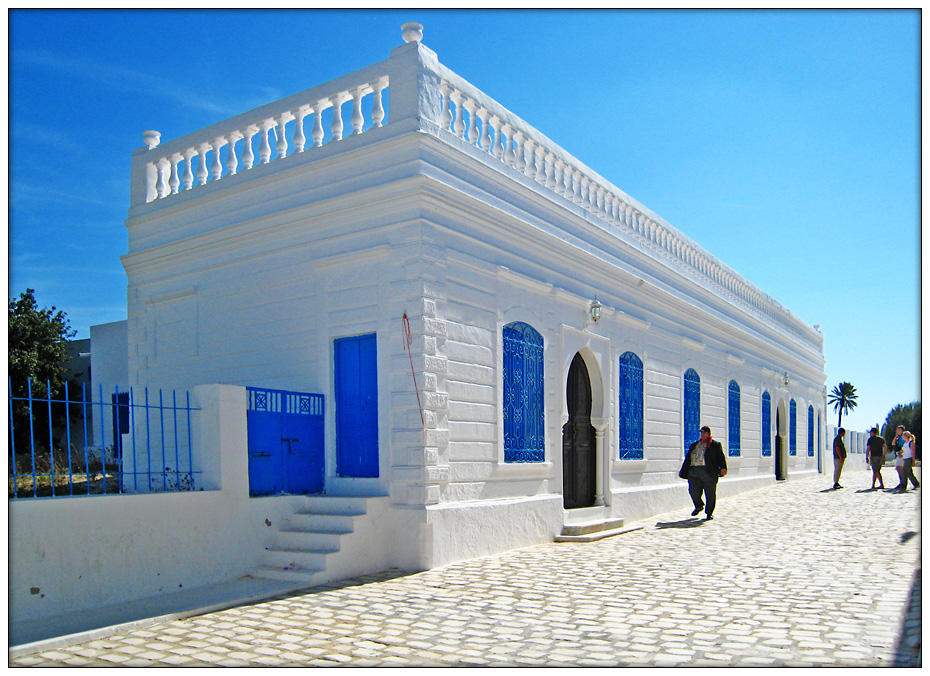 |
| street corner in Djerbahood, er Riadh, Tunisia, with sample artwork in background, artwork courtesy Mario Belem, picture courtesy, MistakerMaker.org |
Beginning in the 3rd century BCE, er Riadh/Djirt was part of the Berber Kingdom of
Numidia. Roman rule followed in 46 BCE. In the 8th century, the town, as well as the rest of North
Africa, became occupied and colonized by the Arabs and governed by their
various dynasties. Since the latter 10th century and the rule of the
Arab Fatimids, the town was governed by various other dynasties, some
indigenous Berber, some not – the Masmuda Berber Almohads whose rule was
briefly interrupted by the Almoravid Sanhaja Berber Banu Ghaniyas; the Kurdish
Ayyubids; the Hintata Berber Hafsids; the Turkish Ottomans; the French; and
finally, the Arabs again.
It
was an anomaly in North Africa, and in the “Arab world” in general, that at one
time, er Riadh/Djirt had become a mostly Jewish town. According to tradition,
the first Jews settled in Djirt, among the indigenous Berbers, as refugees from
the Babylonian destruction of Solomon’s Temple and the conquest of Judea in 586
BCE. (A second wave of Jewish immigration occurred after the Romans destroyed
the Second Temple in 70.) Jews and Berbers have lived together in peace
ever since. It was said that the el
Ghriba synagogue which was built, contained a door and a stone from the
destroyed Temple that was brought over by some of the high priests. Another
tradition says the synagogue was built on a spot where a young girl (ghriba,
"the isolated one") who had not been accepted by the others, had
lived. After her death, her uncorrupted body was found by the Jews of the
nearby village, and then buried in a cave
which became the site of an annual pilgrimage for Lag BaOmer. Today, the synagogue is located on the southern border of the
town. Centuries later, it and the surrounding area became the scene of Arab
terrorist attacks. In 1985, during the festivities for Simchat Torah, a local policeman responsible
for the synagogue‘s safety opened fire into the crowd of celebrating Jews,
killing three people, including a child, and wounding 15. On April
11, 2002, a truck full of explosives was detonated close to the synagogue, killing 21 – 14 German and 2
French tourists, and five locals. Al-Qaeda claimed
responsibility for the bombing, which was found to have been masterminded
by Khalid Sheikh
Mohammed and financed by
a Pakistani resident of Spain.
Er
Riadh today is surrounded by towns of mixed Berber, Arab settler, and
sub-Saharan African residents – Medjine,
the closest; Megmag; el May, a
mostly Berber village; Oualegh; Barkouk;
and Houmt Souk, the major city on Djerba
lying a few miles to the north on the coast. Inside the town itself and in Djerbahood, is the Guest House, an authentic Berber house
from where travelers can explore other parts of the island as well as southern
Tunisia on the mainland.
 |
| el Ghriba Synagogue, er Riadh, Tunisia, courtesy, fotocommunity.de |
No comments:
Post a Comment